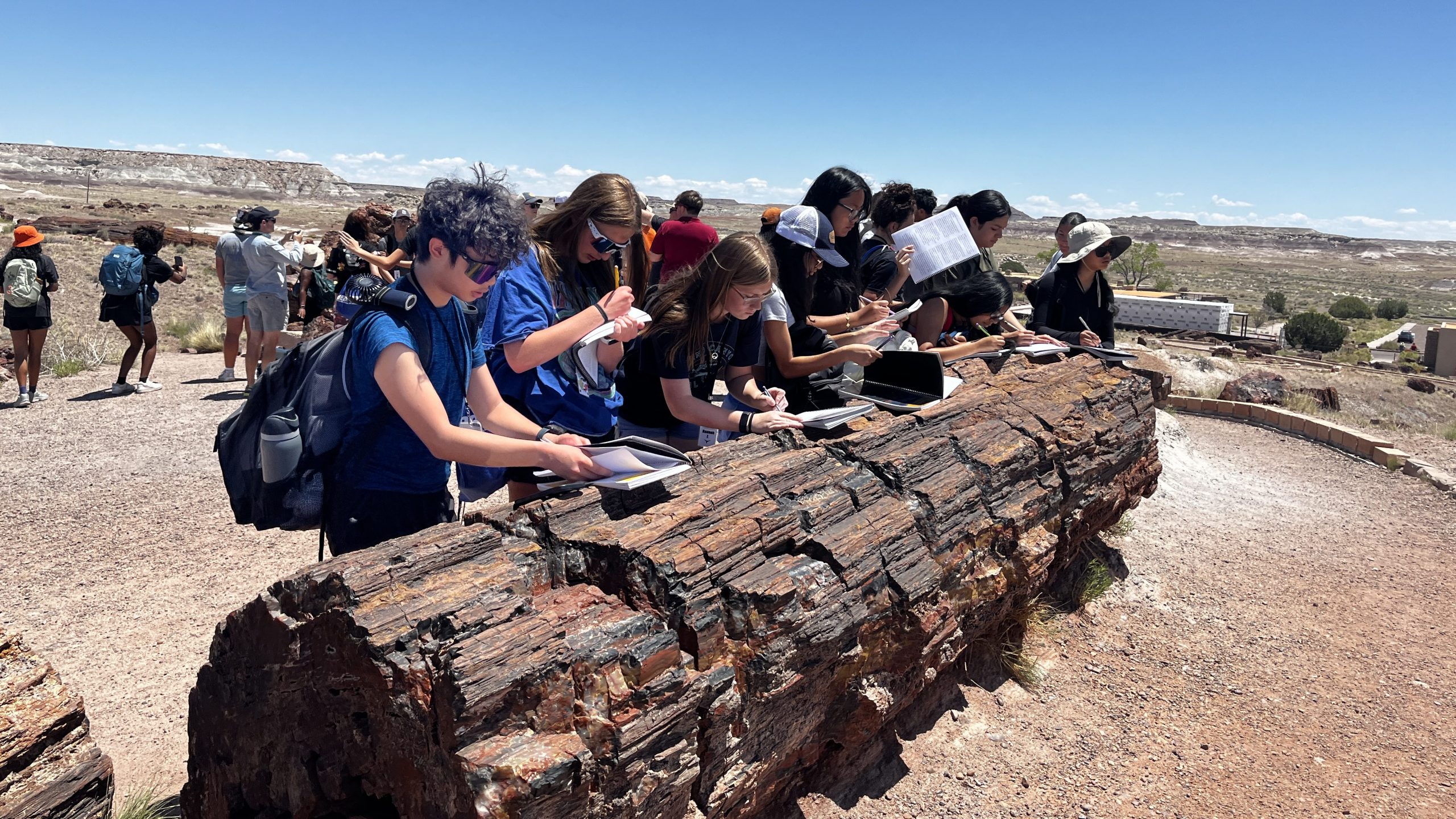Summer 2025 Wrap Up
September 21, 2025
This summer marked the 21st summer of the GeoFORCE Texas Program—and what a season it was! With 470 students participating across 10 academies, our summer was packed with hands-on geologic exploration, unforgettable memories, and inspiring moments for students across the country.
We’re always striving to improve the GeoFORCE program and experience. This year, GeoFORCE introduced new cohort regions. Instead of Austin, Southwest, and Houston-based cohorts, our newest 9th grade students were separated into GeoFORCE East and West. This change allowed us more flexibility in recruitment and acceptance of students across the entire state of Texas!
In terms of academy content, our largest revision this year was to the 9th grade academy. The first two days were relatively unchanged, visiting GeoFORCE staples like Mount Bonnell, Enchanted Rock, Inks Lake, and Longhorn Cavern. Tuesday showcased two new stops; Pedernales Falls and Canyon Lake Gorge. These stops were added to highlight Central Texas fossils and water systems that shape the landscape.
At Pedernales Falls, students learned how to take strike and dip, sketch the landscape and crinoid fossils, and study how the river has altered the bedrock. Following Pedernales Falls, the group visited Canyon Lake Gorge where they had a guided tour of the well-preserved fossils and dinosaur tracks exposed by the massive flooding event that created the gorge in a matter of days.
Another change was the addition of Mustang Island and the UT Marine Science Institute on Friday. At Mustang Island, students compared grain size samples and measured the beach profile, beach slope and longshore drift. Later that afternoon, students explored the UT Marine Science Institute, where they were led through a marine debris investigation activity and jetty exploration activity. One 9th grader stated, “I had a great experience with GeoFORCE learning and exploring. This experience has helped me expand my knowledge on rocks, weathering, erosion, deposition and more. I feel as though this will help other younger kids to be able to be more involved in the world around us.”
The 10th grade academy followed its classic route through the American Southwest, with only a few changes. This year, we began with Bryce Canyon before going to Zion to more accurately step “down” the Grand Escalante Staircase. New this year was also the addition of Petrified Forest National Park. This stop was added so students could see an example of a badlands landscape—a type of environment not seen on any of the current GeoFORCE academies.

The 11th grade academy also remained relatively the same, with the only additions being Toketee Falls and Oregon Museum of Science and Industry. Toketee Falls, which is located on the way to Roseburg, shows a remarkable example of columnar basalt. We also returned to Oregon Museum of Science and Industry, where students learned how museums communicate science with exhibits. The overarching theme of the 11th grade is natural disasters, ending with a final project where students use their scientific knowledge to communicate the risks of a natural disaster in a mock town hall.
One 11th grader stated, “GeoFORCE provides unparalleled opportunities to not only deepen students’ understanding of geology, but also of the natural sciences. From going to scenic landscapes to museums, learning is made extremely fun and exciting. In my experience, I made many memories and learned a lot about geology.”
This year’s 12th grade research academy boasted 12 different research projects, with several new topics. Below are the research projects and the lead Research Mentor. The projects with an asterisk (*) are new additions as of this year.
- Coral/Cave Samples – Dr. Jud Partin*
- Drone Surveying of Coastline Change – Dr. Tim Goudge
- Earthquakes – Isabelle Lambert
- Environmental Engineering for Brazos Reservoirs
– Dr. Sarah Fakhreddine*
- Highland Lakes – Dr. Jamie Austin
- Ice Sheet Modeling – Dr. Benjamin Keisling
- GeoHeritage – Linda McCall
- Geologic Sequestration of CO2 – Dr. Sue Hovorka
- Magma & Crystallization – Dr. Chenguang Sun*
- Porous Media Modeling – Dr. Masa Prodanovic*
- Radiogenic Dating of Antarctica – Dr. Staci Loewy
- Vertebrate Paleontology – Dr. John Moretti
The academy concluded with the annual Symposium and Senior Awards and Recognition Event, with over 400 people in attendance.
Following the 12th grade, we hosted our annual Math and Science Institute. 30 GeoFORCE alumni spent a week catching up on their calculus, chemistry, and physics knowledge to better prepare them for their first year of college.
Closing out the summer alongside Math and Science was the GeoFORCE Virtual Academy. This year, students were given the opportunity to learn the Geographic Information Systems (GIS) skills with Daja Elum, a Atmospheric Science Ph.D. Student at Howard University. The Virtual academy introduced students to the basics of GIS in morning and afternoon sessions. Each day built upon the previous, developing students’ knowledge to eventually take on a final project, where they used the skills they’d learned to map out a point of interest in their local area.
The GeoFORCE Team would like to thank all sponsors, staff, parents, and students who made this summer possible. We can’t wait for 2026!



